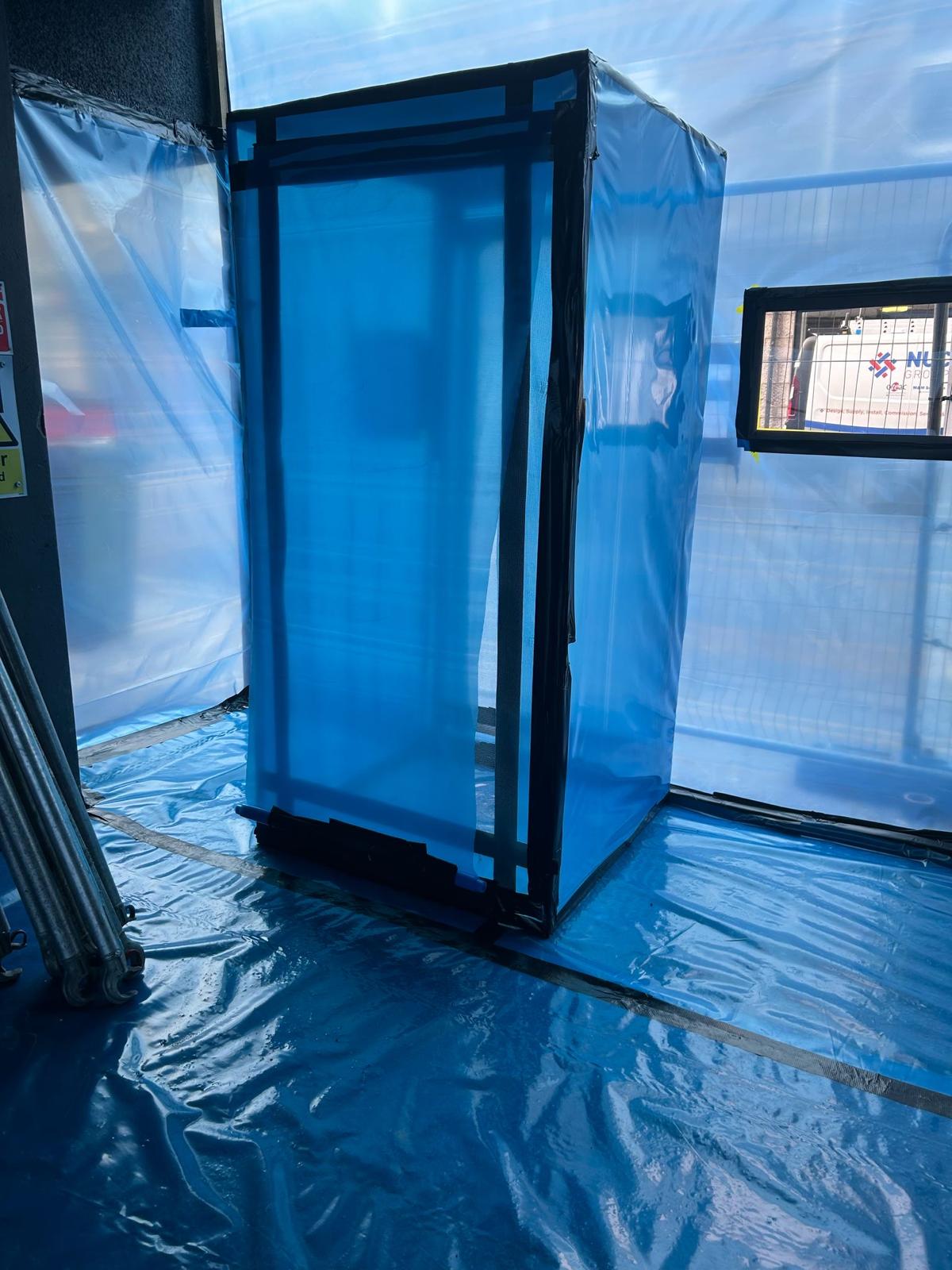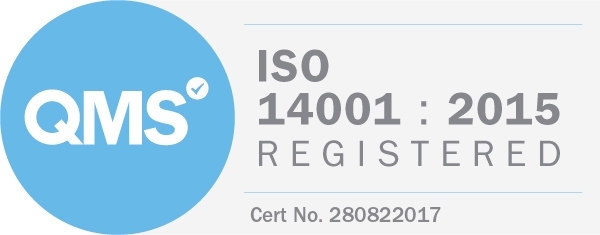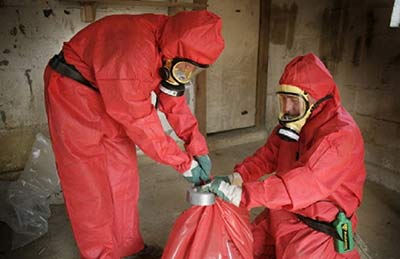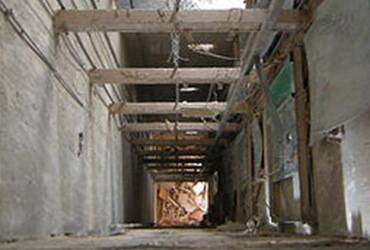Removal of Asbestos Insulated Board (AIB) Canopy Ceiling in Aberdeen
Asbestos removal is a specialised process that requires expert knowledge, advanced safety measures, and strict adherence to UK regulations. This is especially important in situations involving Asbestos Insulated Board (AIB), which was once commonly used for its fire-resistant properties but is now known to pose serious health risks when disturbed.
Recently, our team was contracted to remove an AIB canopy ceiling in Aberdeen. We’d like to share some important insights from that project—along with best practices for anyone who might suspect asbestos in their property.
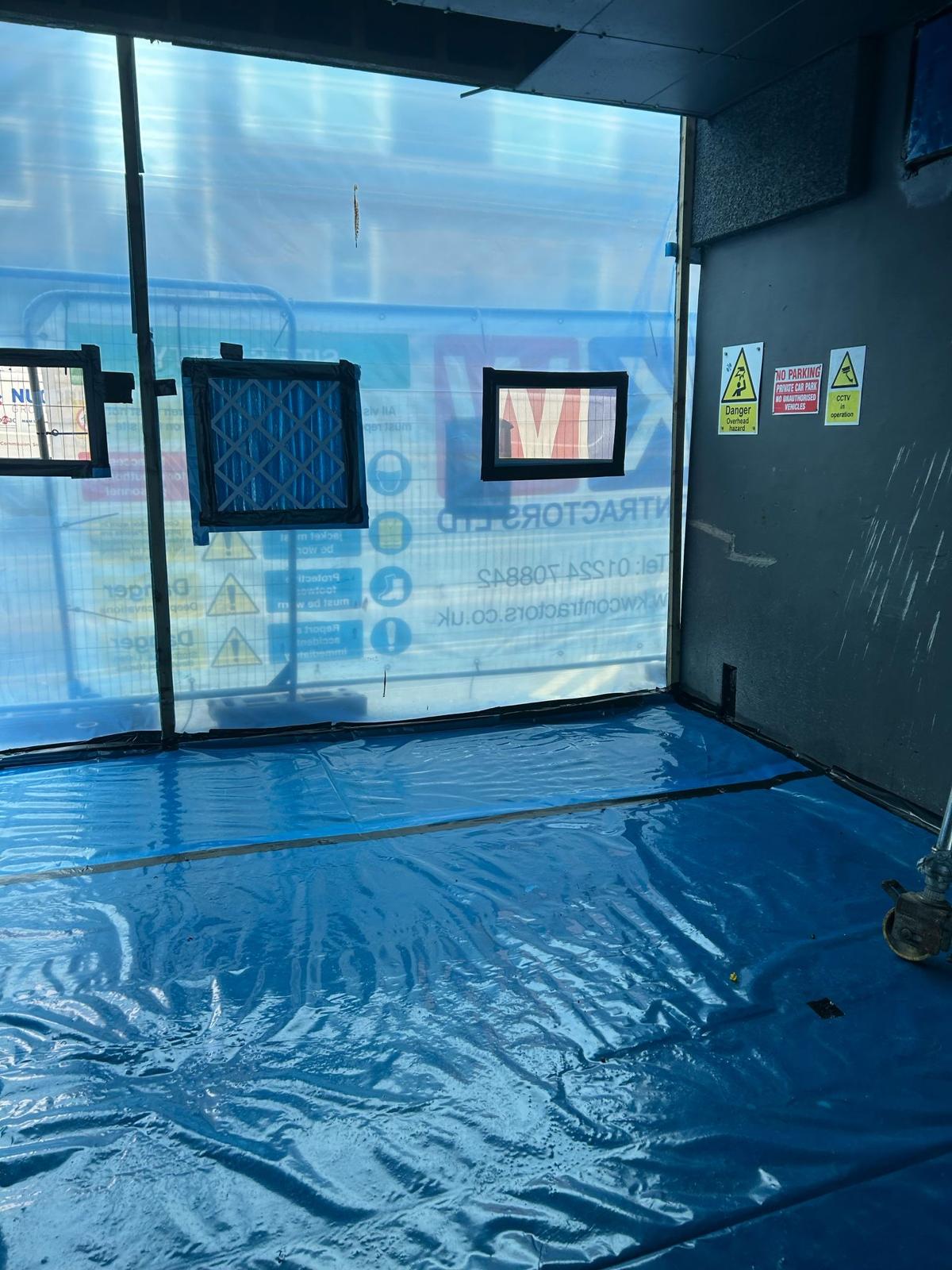
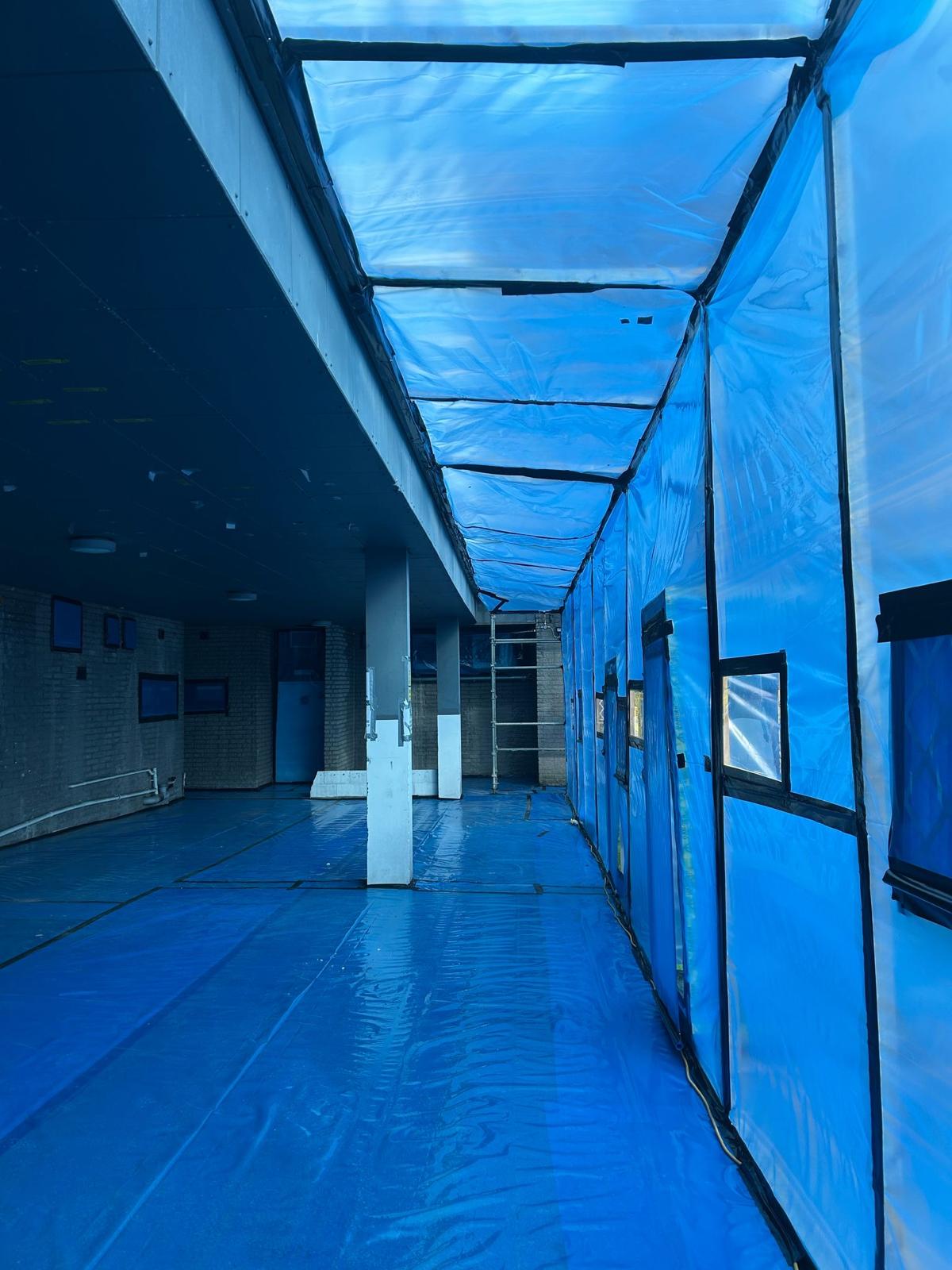
Why is Asbestos Removal Necessary?
Historically, asbestos was valued for its durability, heat resistance, and cost-effectiveness. However, as research advanced, we discovered that disturbing asbestos-containing materials can release microscopic fibres that, if inhaled, can cause long-term health complications. This makes removal a top priority for three main reasons:
- Health and Safety: Prolonged exposure to asbestos fibres is associated with serious respiratory conditions, including asbestosis and mesothelioma.
- Legal Compliance: In the UK, asbestos is heavily regulated. Property owners, employers, and facility managers have a legal duty to manage and mitigate any asbestos on the premises.
- Protecting Property Value: Responsibly removing asbestos helps maintain or increase a property’s value, ensuring a safer environment for occupants and visitors.
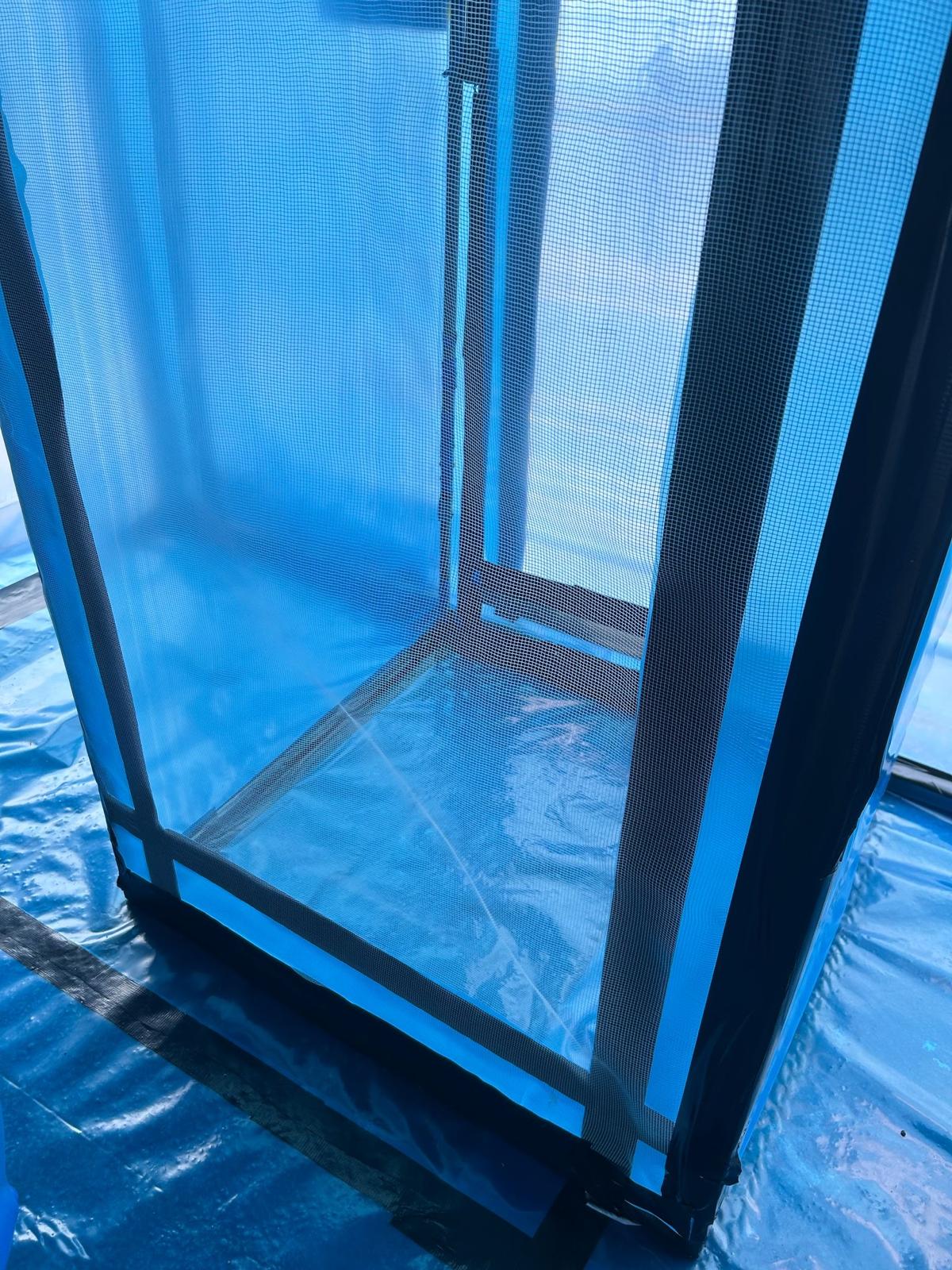
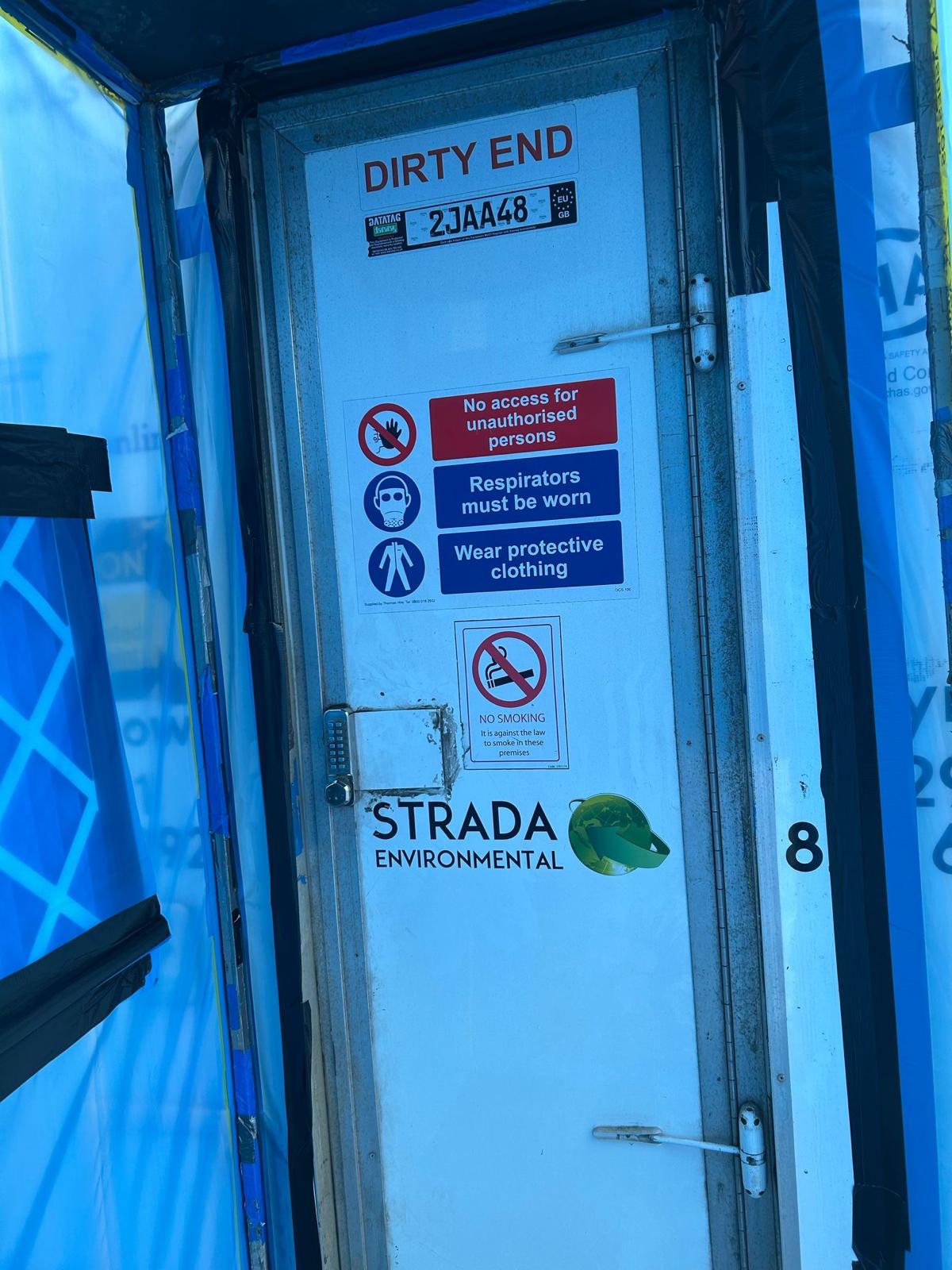
Overview: AIB Canopy Ceiling in Aberdeen
Aberdeen is known for its distinctive granite architecture, and many older properties contain building materials from a time when asbestos was widespread. In this particular project:
- Initial Survey: Our client raised concerns about an older canopy ceiling. An asbestos survey was carried out, and tests confirmed the presence of AIB.
- Risk Assessment: Although the ceiling appeared structurally sound, any planned refurbishment or demolition work risked disturbing the AIB. Given the material’s potential to release harmful fibres, removal was deemed the safest course of action.

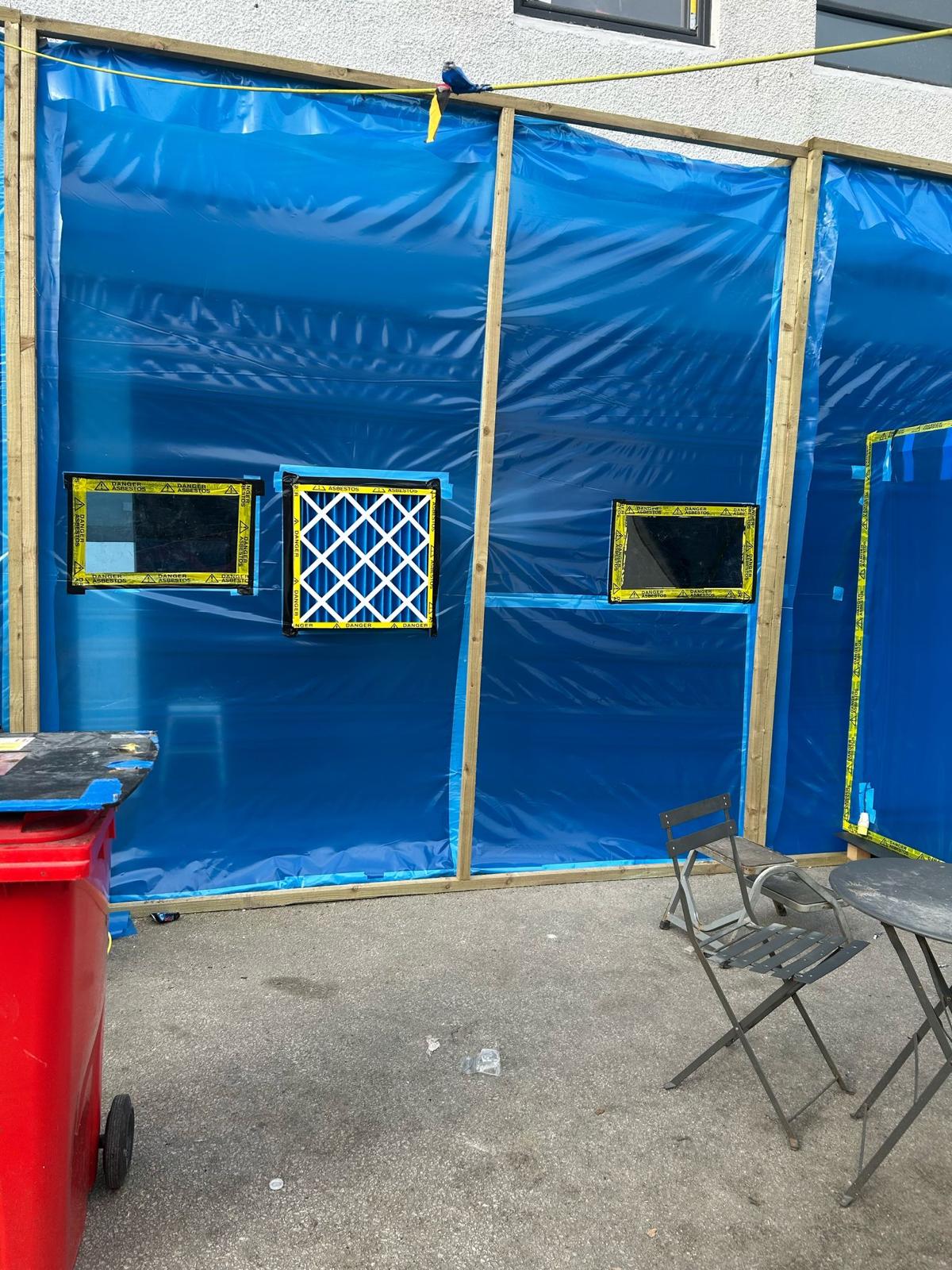
Step-by-Step Removal Process
Survey and Identification
A qualified asbestos surveyor first collected samples from the canopy ceiling. Laboratory analysis confirmed the presence of AIB, thereby dictating the specialised procedures needed for safe removal.
Planning and Preparation
- Method Statement and Risk Assessment: We drafted detailed documents outlining every stage of the removal process. This included how the materials would be handled, minimising the risk of airborne fibres.
- Notification: In certain situations, the Health and Safety Executive (HSE) must be notified about forthcoming asbestos removal projects. Our team ensured all legal protocols were observed.
Establishing a Controlled Environment
- Enclosure: The area beneath the canopy ceiling was sealed off to prevent asbestos dust from contaminating adjacent spaces.
- Negative Pressure Unit (NPU): We installed a specialised ventilation system to maintain negative pressure within the work enclosure. Air inside was filtered through HEPA filters before being safely exhausted outside.
- Airlocks and Decontamination Units: To enter and exit the work zone, personnel used airlock systems. We also set up decontamination units so all tools, equipment, and protective clothing could be thoroughly cleaned before leaving the site.
Safe Removal
- Personal Protective Equipment (PPE): Each operative wore disposable coveralls, accredited respirators, and protective gloves to guard against asbestos exposure.
- Careful Dismantling: The AIB boards were removed with great care to minimise breakage, thereby reducing the likelihood of fibre release. All waste was double-bagged in specially labelled asbestos disposal bags or containers.
Site Clearance and Certification
- Thorough Cleaning: Once removal was complete, the area was meticulously vacuumed using an H-type (asbestos-rated) cleaner. All disposable materials, including PPE, were sealed and labelled for proper disposal.
- Air Testing: Independent analysts carried out air monitoring to confirm it was safe for reoccupation
- Certificate of Reoccupation: After the clearance testing indicated no asbestos fibres remained at harmful levels, we dismantled the enclosure and issued a reoccupation certificate to the client.


Post-Removal Considerations
1. Legal Disposal
Asbestos waste can only be disposed of at licensed facilities equipped to handle hazardous materials. Attempting to dispose of asbestos in any unapproved manner is both illegal and dangerous.
2. Refurbishment Options
Once asbestos-containing materials are removed, the space is safe for modern upgrades—such as new insulation, enhanced lighting systems, or improved ventilation.
3. Ongoing Monitoring
For older properties, it’s a good idea to have a periodic asbestos management plan in place, even after a removal project. Asbestos can be present in other parts of a building, and regular checks help maintain a safe environment.


Key Takeaways
- Professional Expertise is Vital: Asbestos handling must be entrusted to licensed specialists who follow strict safety and legal guidelines. This is not a DIY task.
- Compliance and Documentation: In the UK, asbestos removal projects often require formal notification and detailed risk assessments. Maintaining comprehensive documentation ensures you stay on the right side of the law.
- Safety First: Asbestos is a dangerous substance, and cutting corners can endanger workers, residents, and the wider community. It’s always worth investing in a properly managed removal.
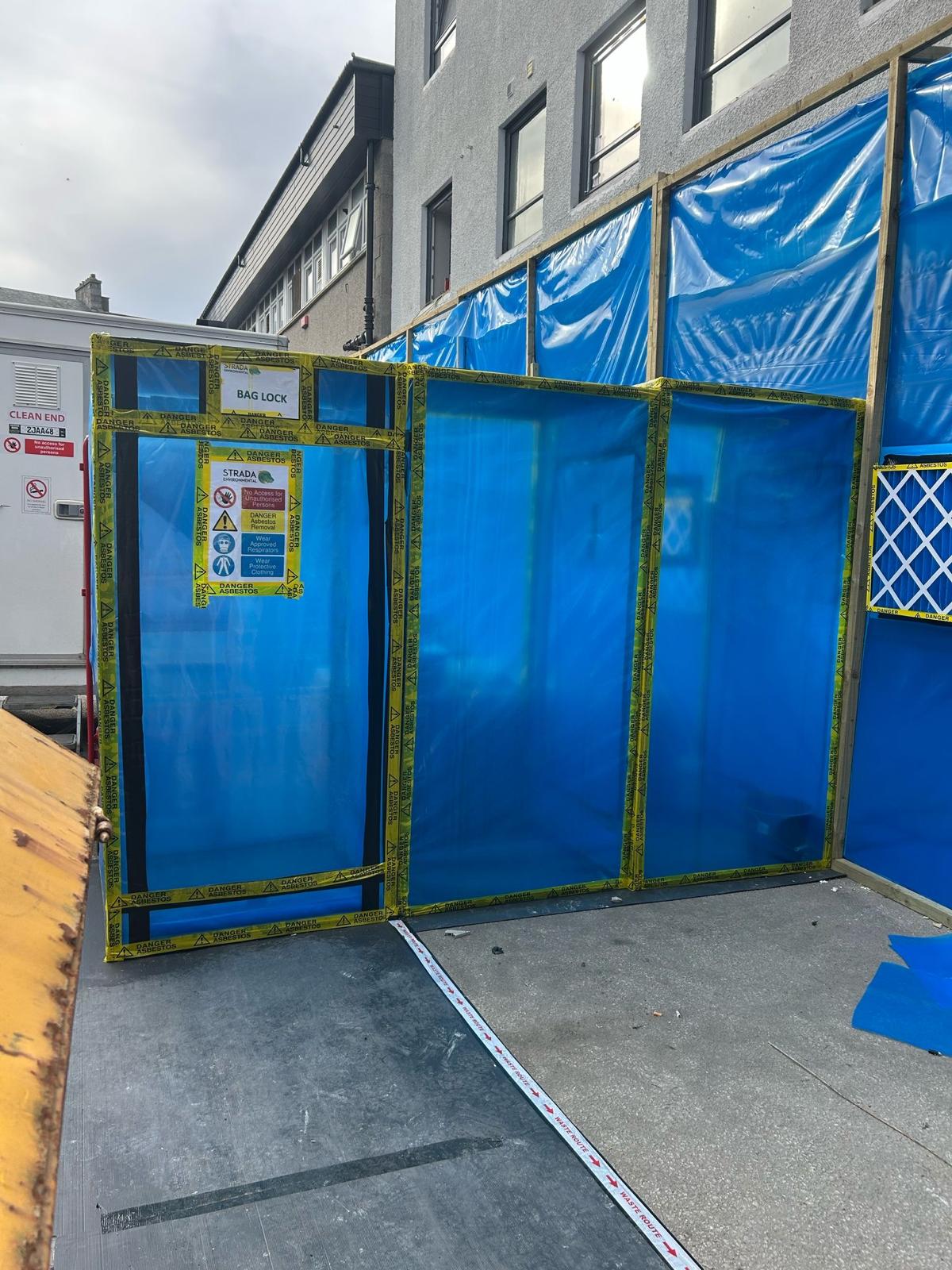

How We Can Help?
If you suspect asbestos in your Aberdeen property—or you’ve already confirmed its presence—our professional team is here to assist. From initial surveys and legal notifications to final clearance and certification, we manage the entire process with the utmost care and attention to detail.
For more information or to schedule a survey, get in touch with us today. We take great pride in our work, ensuring Aberdeen’s homes and businesses remain safe, healthy places for everyone.

